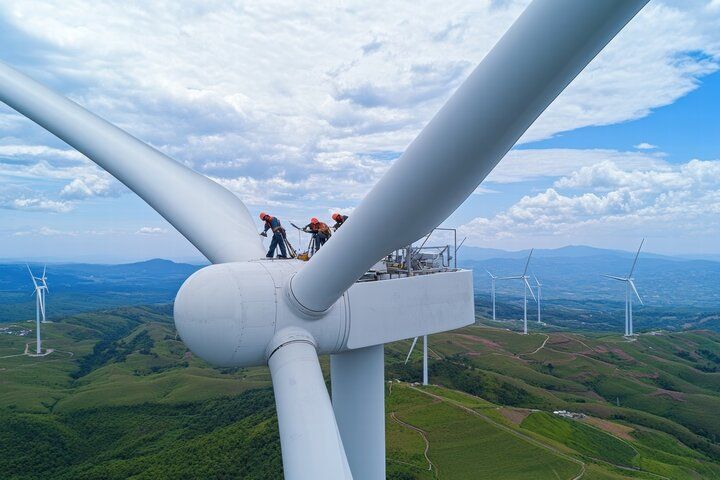
Offshore wind structures represent a fundamental pillar in the transition to renewable energy sources. However, their maintenance and the technical shutdowns necessary to ensure their operability require advanced tools that optimize safety and efficiency. In this context, torque transducers emerge as key devices in the monitoring and control of the operation of wind turbines.
What are torque transducers?
A torque transducer is a sensor that measures the torque or torque moment applied to a rotating shaft. These devices convert the torsional force into a proportional electrical signal, allowing real-time monitoring of the load and mechanical stress on different components of the wind turbine. They can be classified into two main types: contact torque transducers, which use strain gauge bridges to capture mechanical deformation, and non-contact transducers, which employ technologies such as induction or telemetry for more accurate and wear-free measurement.
Advantages of torque transducers in offshore wind structures
- Real-time monitoring: The ability to obtain real-time data allows anomalies to be detected immediately, facilitating a quick response to any irregularities.
- Performance optimization: By accurately measuring the torque transmitted through the transmission system, it is possible to adjust the operation of the turbine to maximize its efficiency.
- Reduced wear and failure: Constant torque monitoring helps prevent overloads and excessive vibrations, extending component life.
- Improved safety: Early detection of mechanical failures minimizes the risk of accidents and optimizes working conditions in harsh environments such as the sea.
Use of torque transducers in maintenance and shutdown
Maintaining offshore wind turbines is a complex task due to their exposure to extreme conditions, such as salinity, humidity, and strong winds. During technical stoppages, torque transducers play a crucial role in assessing the condition of mechanical systems and planning the necessary interventions.
- Preventive diagnostics: They allow you to identify early signs of wear in the power train, reducing the need for urgent and costly repairs.
- Load and fit testing: Facilitates accurate calibration of drive systems to ensure optimal operation after maintenance.
- Reduced downtime: Real-time data collection and analysis help shorten technical downtime, minimizing economic losses due to downtime.
Find about the EGA Group Wireless RF Torque Transducters
In short, torque transducers are indispensable tools to improve the reliability and efficiency of offshore wind structures. Its implementation in maintenance and shutdown work not only optimises the performance of wind turbines, but also contributes to the safety and sustainability of offshore wind energy.

